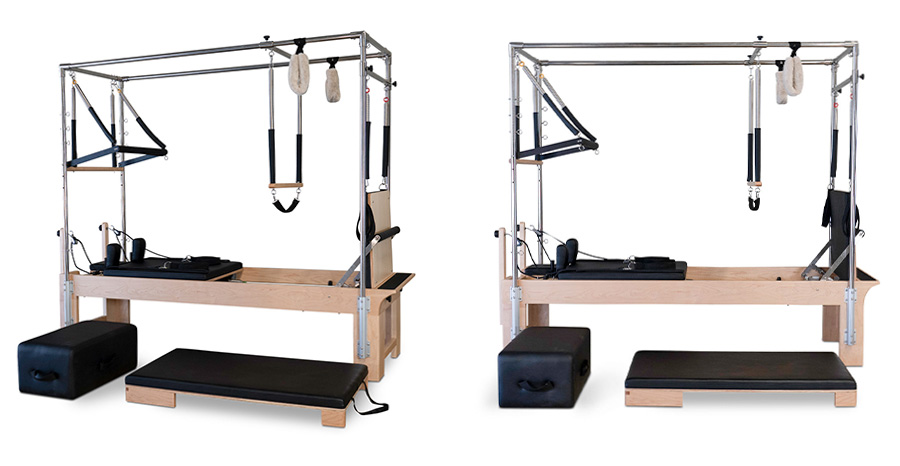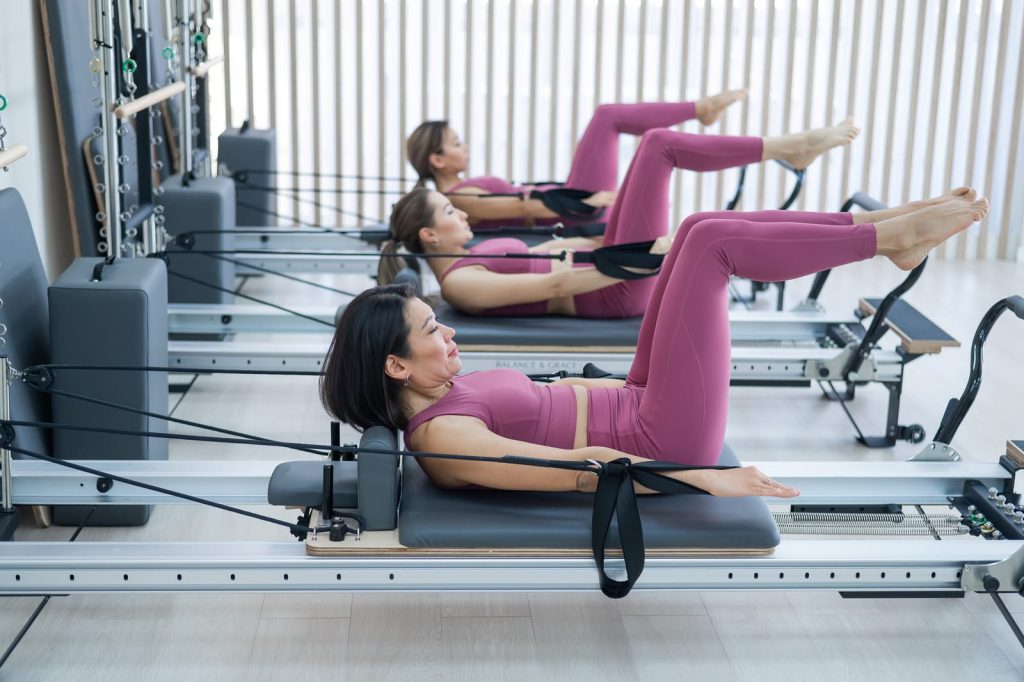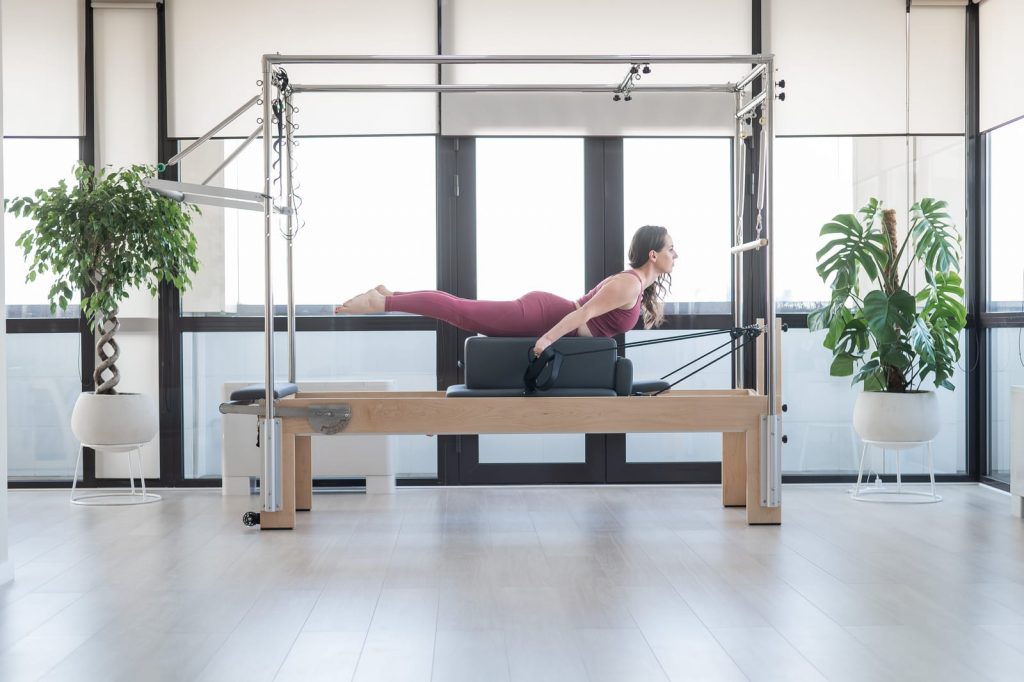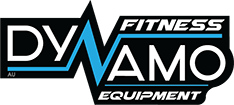
The Complete Beginner’s Guide to Using a Pilates Reformer Machine
Starting a Pilates journey can be both exciting and a little intimidating—especially when you see a Pilates reformer machine for the first time. It looks more like a medieval torture device than a piece of gym equipment!
But trust us, it’s one of the most effective, low-impact, full-body workout machines you can add to your fitness routine. Whether you’re aiming to boost core strength, improve flexibility, or recover from injury, a Pilates reformer can be your new best friend.
In this guide, we’ll walk you through everything you need to know as a beginner: how it works, what to expect, how to get started, and the best machines to consider.
What Is a Pilates Reformer Machine?
A Pilates reformer machine consists of a sliding carriage attached to a metal or wooden frame, adjustable resistance springs, a footbar, shoulder blocks, and long straps with handles.
The moving carriage allows for dynamic, resistance-based movement, giving you a more comprehensive workout than mat Pilates alone.
The reformer’s versatility allows you to perform over 100 different exercises. You can lie down, sit, kneel, stand, or use the straps to move your arms or legs—all while engaging your core. The adjustable springs mean you can tailor the resistance to your current fitness level.
Pro Tip: If you’re new to reformers, start with lighter resistance. More springs doesn’t always mean harder—in some moves, less resistance actually makes the exercise more challenging for your core.
Benefits of Using a Pilates Reformer
Full-Body Engagement: Unlike isolated machines at the gym, the reformer targets multiple muscle groups simultaneously.
Low-Impact Movement: Ideal for those recovering from injury or with joint issues.
Improved Posture: Strengthens postural muscles often ignored in traditional workouts.
Greater Flexibility & Range of Motion: The reformer encourages elongated movement.
Core Strength: Every exercise works the deep abdominal muscles.
Pro Tip: Try pairing reformer Pilates with functional strength training using adjustable dumbbells to complement your core stability work.
Who Should Consider Using a Reformer Machine?

The great thing about reformer Pilates is its accessibility. It caters to all fitness levels, ages, and goals.
It’s great for:
- Beginners looking to build foundational strength
- Athletes wanting to improve mobility and reduce injury risk
- Seniors who need low-impact, joint-friendly workouts
- Post-rehab recovery and injury prevention
Pro Tip: Always consult a Pilates-certified instructor before starting a reformer program, especially if you’re managing an injury or chronic pain.
Core Features
Before hopping on a reformer, get familiar with its key parts:
Carriage: The moving platform where you lie or sit
Springs: Attachments that control resistance
Footbar: Where you place your hands or feet
Shoulder Blocks: Keep you stable on the carriage
Straps and Handles: Used for upper or lower body work
We recommend checking out the Reeplex Luna Pilates Reformer Machine for a smooth-glide carriage and versatile setup.
Pro Tip: Adjust the spring resistance and footbar position before starting your workout to avoid mid-session tweaks.
Beginner-Friendly Pilates Reformer Exercises
Here are five go-to beginner exercises to start with:
- Footwork (Supine Leg Press): Lie on your back, feet on the footbar, and press out to extend your legs.
- Leg Circles: Feet in straps, legs extended; draw large, slow circles for mobility.
- Hundred: A classic Pilates core activation while lying on your back.
- Bridging: Lift your hips from the carriage to activate glutes and hamstrings.
- Kneeling Arm Work: Face the footbar, hold straps, and perform bicep curls or shoulder presses.
Pro Tip: Focus on breath and control—Pilates is about precision, not reps or speed.
8 Safety Tips for First-Time Users
When you’re just starting out with a Pilates reformer, safety should be your top priority. While the machine itself is designed to be low-impact and joint-friendly, incorrect use or posture can lead to strain or discomfort.
These expanded tips will help you build confidence and stay injury-free:
#1 Always engage your core before starting any movement
Your core is your control center in Pilates. Before initiating any push, pull, or lift, gently draw your belly button toward your spine to activate your deep abdominal muscles.
#2 Move slowly and with intention
Unlike high-intensity training, Pilates prioritises quality over quantity. Slow, mindful movements help you stay in control and work muscles more effectively. This also reduces the chance of jerky or misaligned actions that can cause strain.
#3 Don’t overload the springs at the start
More springs don’t always mean a harder workout. In fact, too much resistance can compromise form and increase injury risk. Start with light resistance and focus on mastering alignment and control first.
#4 Use grip socks for extra stability
Pilates grip socks improve your traction on the footbar or carriage, especially when performing standing or plank-based movements. They also help keep your feet warm and hygienic if you’re sharing equipment.
#5 Keep your neck and shoulders relaxed
Many beginners unknowingly tense their upper body, especially during core-focused work. Keep your shoulders away from your ears, your jaw relaxed, and avoid craning your neck during abdominal exercises.
#6 Stay aware of spring tension changes
When changing springs, always check that they are securely hooked and the carriage is stable. Sudden movements from unbalanced springs can throw you off balance.
#7 Check alignment regularly
Use the mirror if you have one or film yourself to spot posture imbalances. Reformer exercises are most effective when your spine is neutral and limbs are aligned.
#8 Don’t forget to breathe
Don’t hesitate to pause between exercises to reset your posture and breathing. Pilates isn’t about rushing—it’s about doing every move with control and purpose.
Pro Tip: Record your first few workouts and review your form or work with a virtual instructor to fine-tune alignment.
Choosing the Right Pilates Reformer for Home

When investing in a reformer, consider:
- Frame Material: Aluminum or wood? Aluminum is more lightweight and portable.
- Adjustability: Look for machines with adjustable headrests, ropes, and footbars
- Storage: Foldable or upright storage models are perfect for small spaces
- Price vs Durability: Don’t compromise on build quality. A reformer is a long-term investment.
Pro Tip: Bundle your reformer with accessories like a Pilates box or jump board for added versatility.
How Often Should You Use a Reformer Machine?
2-3 sessions per week is a great starting point for beginners. As you gain confidence, increase to 4-5 sessions with varied intensity.
Make sure to allow rest and recovery days, especially if you’re integrating reformer workouts with cardio machines like treadmills or rowing machines.
Pro Tip: Keep a training journal to track progress, flexibility gains, and strength improvements.
Common Mistakes to Avoid when Using A Reformer Machine
Even though Pilates reformers are beginner-friendly, it’s easy to fall into a few habits that can limit your progress or lead to discomfort. These common mistakes often go unnoticed but can make a big difference in how effective (and safe) your workouts are.
Being aware of them early on means you can build a stronger foundation and see better results sooner.
- Holding your breath during exercises
- Relying too much on the springs
- Letting your shoulders hunch up toward your ears
- Rushing through reps
- Ignoring alignment cues
Pro Tip: Less is more—the smallest adjustments to posture and resistance can make a huge difference.
Intermediate Pilates Reformer Exercises
Once you’ve built a strong foundation with beginner moves, it’s time to explore more challenging exercises. Intermediate reformer Pilates introduces greater balance, coordination, and core stability.
Here are some effective intermediate movements:
- Short Spine Massage: Lying down with feet in straps, raise your hips and roll up into a controlled spine lift before rolling down. Great for spinal mobility and core control.
- Elephant: In a standing plank-like position with feet on the platform and hands on the footbar, use the core to glide the carriage in and out. Builds core and hamstring strength.
- Long Box Pulling Straps: With the long box on the carriage, lie on your stomach and use the straps for rowing and reverse fly motions. Excellent for posture and upper back.
- Side Splits: Standing with feet on either side of the reformer platform, glide one foot away and return. Targets abductors, adductors, and balance.
- Teaser on the Reformer: A dynamic core challenge, requiring control as you balance on the carriage and lift into a V-sit.
We recommend trying these moves on a reformer with a solid base and shoulder blocks.
Pro Tip: As the exercises become more advanced, reduce spring resistance to engage stabilising muscles and improve control.
Accessories to Enhance Your Pilates Reformer Workouts
Once you’re comfortable with the basics, adding a few accessories can unlock a whole new level of reformer workouts.
These simple but powerful tools help expand your movement range, introduce new challenges, and bring more variety to your routine—so you stay motivated and keep progressing.
Whether you’re targeting specific muscle groups or looking to add some cardio, these accessories can make your workouts even more effective.
Level up your reformer routine with:
Pilates Box: Adds height and support for seated or prone exercises
Jumpboard: Great for cardio bursts without impact
Resistance Bands & Loops: Add extra burn to arm or leg work
Pilates Ring: Perfect for inner thigh and arm toning
Check out our range of Pilates accessories to upgrade your setup.
Pro Tip: Always warm up your spine and hips with mobility work before getting on the reformer.
A Pilates Reformer Is a Game-Changer for Your Home Fitness Routine
The Pilates reformer is more than just a trendy piece of home gym equipment. It’s a powerhouse of core strength, mobility, and body awareness.
Whether you’re aiming to tone, rehab, or simply feel better in your body, it’s one of the most effective and sustainable forms of exercise out there.
At Dynamo Fitness, we stock a curated range of premium Pilates Reformer machines, designed for every level—from home workouts to studio-quality setups.
Ready to start your Pilates journey? You can explore our full collection online and find the right reformer for your lifestyle and goals.
And if you’re unsure which model suits you best, send us your questions; our team is always here to help.
Alternatively, you can find your nearest Dynamo Fitness showroom and test out a few machines to see which one is the right choice for you.
From first stretch to final rep, we’ve got your reformer journey covered.
